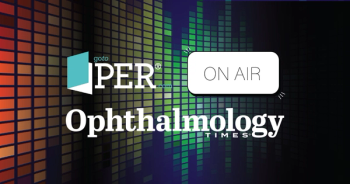
Adenovirus keratitis viral pathogenesis: A persistent enigma
Much has been learned about epidemic keratoconjunctivitis (EKC) since it was first described in 1889.
Reviewed by James Chodosh, MD, MPH
Much has been learned about epidemic keratoconjunctivitis (EKC) since it was first described in 1889.
Yet, aspects of the viral pathogenesis of adenovirus keratitis have remained an enigma, according to
However, persistent researchers armed with the latest technology are following clues that one day may crack the code of this severe form of conjunctivitis. EKC is the only ocular adenovirus infection with corneal involvement and is caused principally by the human adenovirus species D (HAdV-D), types 8, 37, 53, 54, 56, and 64 (formerly type 19a).
RELATED:
Clinical trial
In a recent clinical trial, only 81% of the viruses causing EKC were species D viruses, while about 10% were species E4, and most of the remainder were species B viruses, led by B3.
“Species D was more likely associated with subepithelial infiltrates and more severe disease, so the paradigm holds,” Dr. Chodosh said.
Understanding the structure of the adenovirus is essential to making progress toward a treatment. The protein capsid of the adenovirus is an icosahedron whose faces are composed of 240 hexons that form the serum neutralization determinant. It is interrupted by 12 rings of penton base proteins-five proteins forming each ring-from which project the fiber and the fiber knob.
“It is the binding of the fiber knob to a host cell receptor that starts the infectious process, but it is the subsequent interaction with an amino acid motif on the penton base called the RGD loop that-because there are five proteins-aggregates five alpha-v integrins that cause conformational changes in those integrins, which leads to phosphorylation and intracellular signaling,” Dr. Chodosh said. “And it is that intracellular signaling pathway that pulls the virus into the cell.”
The same pathway that mediates internalization is also responsible for host-cell immune response-innate immune expression of chemokines-and also stabilizes the cell so that it remains alive long enough for the virus to replicate.
Dr. Chodosh referred to the work of the
There is evidence for such a stromal signal, Dr. Chodosh said, but not an antigen-antibody reaction due to subepithelial infiltrate formation.
“The data are most consistent with a different kind of signal, a chemotactic signal caused by a chemotactic protein in the anterior cornea,” he said.
RELATED:
Pathogenesis model
Dr. Chodosh described a proposed pathogenesis model for adenoviral keratitis:
- Infection of the ocular surface epithelium
- Interaction between the viral capsid and molecular pattern receptors on corneal cells
- Intracellular signaling
- Chemokine expression
- Binding of chemokine protein to epithelial basement membrane
- Migration of limbal leukocytes to chemokine reservoirs at corneal epithelial basement membrane, forming infiltrates within corneal subepithelial stroma
Based on this model, Dr. Chodosh would rewrite Jones’ statement to say: “I postulate that the virus grows on the surface, initiating the expression of chemo-attractants which soak into the stroma to become fixed in the underlying basement membrane. Infiltration results only when leukocytes arrive from limbal blood vessels.”
Dr. Chodosh also noted important work on viral evolution performed by the adenovirus research community, which has completed whole genome sequencing on all human adenoviruses.
“Anecdotal evidence from clinicians around the world suggests to me that there are new viruses emerging and more severe, more virulent pathogens,” he said, adding that as the database grows, the scope of research will also expand.
Species D is the largest and most rapidly growing adenovirus species, comprising almost two-thirds of all human adenoviruses in
RELATED:
In the past decade, almost 40 new viruses have been added, more than 20 are in the pipeline, and three that have been newly typed are associated with EKC.
Dr. Chodosh, along with his collaborators, has shown that adenoviruses evolved through homologous recombination of specific genomic regions, and that every species D virus to date has at least 2 prior recombinations accounting for its existence. This recombination may be triggered by the frequency and duration of co-infection in humans by different HAdVs with homologous genome parts.
Despite advances in understanding how adenoviruses cause keratitis-why some are more likely to trigger the disease, and how they evolve-there is still no effective, adenovirus-specific therapy for EKC, although ongoing clinical trials show promise, Dr. Chodosh said.
Given the relatively large and still growing number of whole genome sequences for adenoviruses, Dr. Chodosh said the focus now in the laboratory is on connecting studies of genomics and pathogenesis.
“The audacious goal is to be able to take a viral genome, predict what tissues it would infect, and how virulent it would be,” he concluded. “From that, we may eventually be able to develop specific therapies that are geared towards the virus instead of solely at the inflammation.”
Disclosures:
James Chodosh, MD, MPH
E:
This article was adapted from the Jones/Smolin Lecture, which Dr. Chodosh presented at the 2018 meeting of the American Academy of Ophthalmology. Dr. Chodosh receives grant support from the National Eye Institute and is a consultant/advisor to Shire.
Newsletter
Don’t miss out—get Ophthalmology Times updates on the latest clinical advancements and expert interviews, straight to your inbox.












































